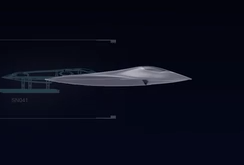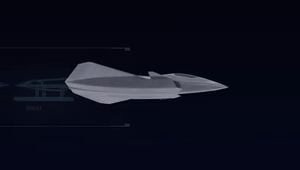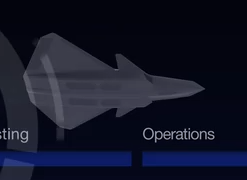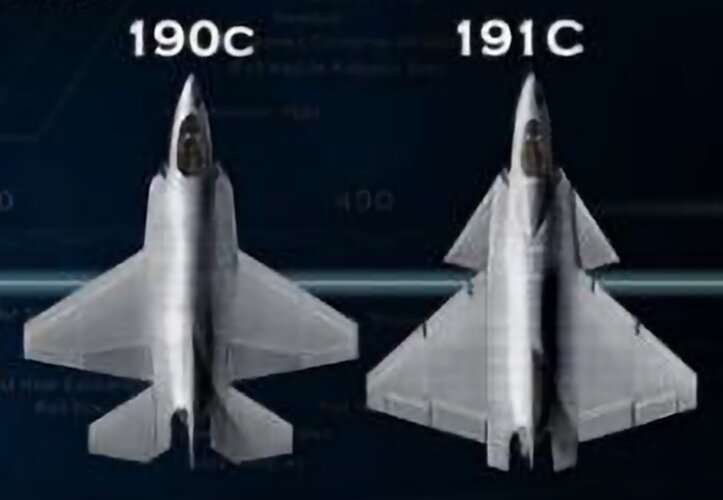You are using an out of date browser. It may not display this or other websites correctly.
You should upgrade or use an alternative browser.
You should upgrade or use an alternative browser.
Are canards bad for stealth? - An Endless Discussion
- Thread starter Deino
- Start date
dark sidius
ACCESS: Top Secret
- Joined
- 1 August 2008
- Messages
- 637
- Reaction score
- 222
YesThis one?
View attachment 717523
View attachment 717521View attachment 717522View attachment 717520
So much on "canards can't be stealth"!
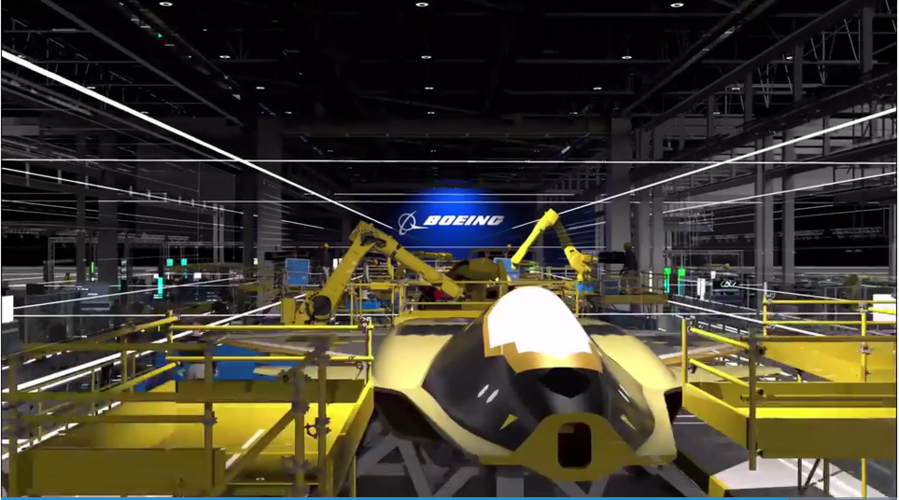
dark sidius
ACCESS: Top Secret
- Joined
- 1 August 2008
- Messages
- 637
- Reaction score
- 222
Canard are less stealthy, but needed for maneuvrability without tails
FighterJock
ACCESS: Top Secret
- Joined
- 29 October 2007
- Messages
- 4,312
- Reaction score
- 3,513
That was one reason why the F-22 does not have canards unlike the Typhoon and Rafale, LM realised that fact early on in the ATF competition and decided not to go with them.
dark sidius
ACCESS: Top Secret
- Joined
- 1 August 2008
- Messages
- 637
- Reaction score
- 222
Surely a difference between Boeing and Lockheed since the start of Boeing rendering on the Ngad we see canardsThat was one reason why the F-22 does not have canards unlike the Typhoon and Rafale, LM realised that fact early on in the ATF competition and decided not to go with them.
FighterJock
ACCESS: Top Secret
- Joined
- 29 October 2007
- Messages
- 4,312
- Reaction score
- 3,513
It will be interesting to see how Boeing deals with the canard problem on the NGAD dark sidius. Perhaps they have found a way to reduce the radar cross section of them, ever since the days of the ATF competition which is now over forty years ago now.
what_is_that
ACCESS: Restricted
- Joined
- 9 August 2023
- Messages
- 21
- Reaction score
- 26
My two takeaways from this video:
Based on the misdirection from industry during the run-up to the ATF competition, and the fact that NGAD appears to be much deeper in the black, I think we now know what the Boeing NGAD certainly doesn't look like.
I physically cringed when they said the line "...well before we start fastening bolts."
Based on the misdirection from industry during the run-up to the ATF competition, and the fact that NGAD appears to be much deeper in the black, I think we now know what the Boeing NGAD certainly doesn't look like.
I physically cringed when they said the line "...well before we start fastening bolts."
Colonial-Marine
UAVs are now friend, drones are the real enemy.
- Joined
- 5 October 2009
- Messages
- 1,210
- Reaction score
- 736
I don't know if canards are inherently a problem for radar cross section. I don't see why they'd automatically be worse than the horizontal tails on a more conventional layout.
That said I really don't see what the benefits of using canards on NGAD or F/A-XX would be.
That said I really don't see what the benefits of using canards on NGAD or F/A-XX would be.
Given that jets fly at approx 4 degree angle of attack ( f-22 specifically) when cruising, I wonder what sort of view angles does that offer to enemy radars which are positioned at same level as the plane?
Alternatively, a ground radar 300 km away from a plane that's already flying at 4 deg AOA would effectively look at the plane at 7 degrees below its horizontal plane (in total).
Alternatively, a ground radar 300 km away from a plane that's already flying at 4 deg AOA would effectively look at the plane at 7 degrees below its horizontal plane (in total).
- Joined
- 11 February 2010
- Messages
- 1,456
- Reaction score
- 1,967
As long as the canard dont move or move a little, everything is fine. The contribution would be relatively minimal.
It's then open to question why canard layout is considered during that design phase.
It's then open to question why canard layout is considered during that design phase.
Check out LM's ASTOVL/JAST model: https://www.secretprojects.co.uk/threads/lockheed-astovl-jast-jsf-projects.238/page-3That was one reason why the F-22 does not have canards unlike the Typhoon and Rafale, LM realised that fact early on in the ATF competition and decided not to go with them.
They did not ditch the canards for stealth reasons. It was the CTOL requirements.
Scott Kenny
ACCESS: Above Top Secret
- Joined
- 15 May 2023
- Messages
- 6,380
- Reaction score
- 5,244
Supposedly, small canards show up a lot better than you'd expect. That and stealthing them needs volumes that small canards don't have, so you end up with stealthy canards so big they're almost a second wing.I don't know if canards are inherently a problem for radar cross section. I don't see why they'd automatically be worse than the horizontal tails on a more conventional layout.
Better controllability, better maneuverability, shorter takeoff runs.That said I really don't see what the benefits of using canards on NGAD or F/A-XX would be.
And for FAXX specifically, slower approach and landing speeds.
Last edited by a moderator:
- Joined
- 24 November 2008
- Messages
- 1,341
- Reaction score
- 1,706
As long as the canard dont move or move a little, everything is fine. The contribution would be relatively minimal.
It's then open to question why canard layout is considered during that design phase.
What about LEVCONs? It seems they are kind of a stealth-variant of canards.
Colonial-Marine
UAVs are now friend, drones are the real enemy.
- Joined
- 5 October 2009
- Messages
- 1,210
- Reaction score
- 736
All true but wouldn't some sort of tail at the rear of the aircraft provide all those same benefits while having less of an impact on RCS?Better controllability, better maneuverability, shorter takeoff runs.
And for FAXX specifically, slower approach and landing speeds.
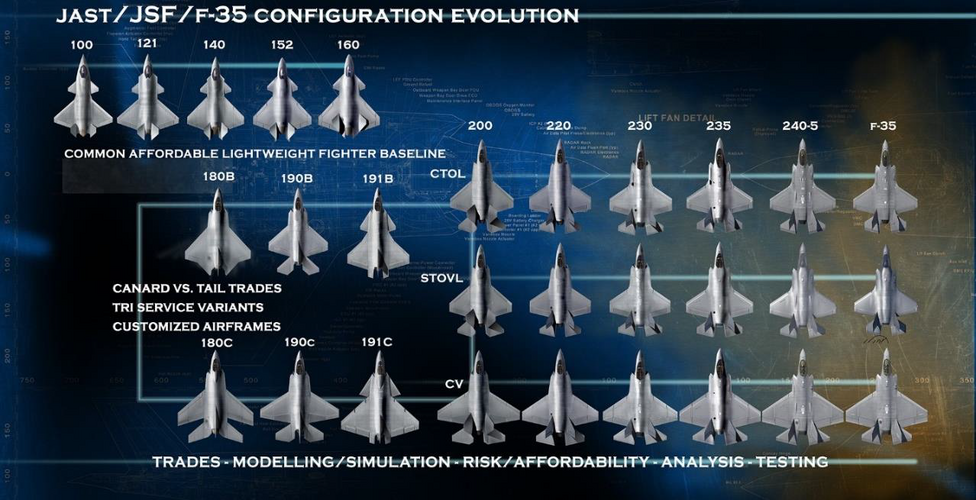 My guess is we are seeing some rejected revision. Interestingly, most contemporary aircraft designs have a 'canard phase', but tend to evolve to look like the F-22, at least this was the case for the Korean and Turkish efforts.
My guess is we are seeing some rejected revision. Interestingly, most contemporary aircraft designs have a 'canard phase', but tend to evolve to look like the F-22, at least this was the case for the Korean and Turkish efforts.And for the stealthiness of canards, there tends to be a lot of 'folk wisdom' on the internet, as to what constitutes a stealthy shape and what doesn't. It commonly comes up that canards and exposed inlets are not stealth. Some people did the stealth shaping analysis on the J-20, and found that canards contribute a relatively minor amount to the return. I don't want to dig up the article but it was posted here.
Likewise, the YF-23 had a partially exposed engine face, and the X-23's was fully exposed, yet both aircraft were said to do well in terms of stealth.
Last edited:
donnage99
ACCESS: Top Secret
- Joined
- 16 June 2008
- Messages
- 1,223
- Reaction score
- 413
because for a air superiority fighter frontal stealth is the most important aspect.I don't know if canards are inherently a problem for radar cross section. I don't see why they'd automatically be worse than the horizontal tails on a more conventional layout.
That said I really don't see what the benefits of using canards on NGAD or F/A-XX would be.
- Joined
- 11 February 2010
- Messages
- 1,456
- Reaction score
- 1,967
Same. as long as they have limited movement, they wont do anything. But of course more visualization effort is needed.What about LEVCONs? It seems they are kind of a stealth-variant of canards.
and that's kinda lacking tbh.
Scott Kenny
ACCESS: Above Top Secret
- Joined
- 15 May 2023
- Messages
- 6,380
- Reaction score
- 5,244
Specifically for the USN plane, using a conventional tail also means a longer aircraft overall.All true but wouldn't some sort of tail at the rear of the aircraft provide all those same benefits while having less of an impact on RCS?
So now that the canard-haters are likely out of the USN, I think it's likely that the FAXX will have a canard.
- Joined
- 24 November 2008
- Messages
- 1,341
- Reaction score
- 1,706
Nope...using a conventional tail also means a longer aircraft overall.
Scott Kenny
ACCESS: Above Top Secret
- Joined
- 15 May 2023
- Messages
- 6,380
- Reaction score
- 5,244
Really? so why are F-15, F-22, and F-35 horizontal stabilators all on booms extending aft of the turkey feathers?Nope
donnage99
ACCESS: Top Secret
- Joined
- 16 June 2008
- Messages
- 1,223
- Reaction score
- 413
the canard version's body is longer which means it's either a larger plane OR since it's longer they are able to make it more slender leading to even lesser drag (beside the advantage of a higher sweep wing and larger wing area)A few posts above...
View attachment 717660
Tool_Shed_Toker
ACCESS: Restricted
- Joined
- 1 February 2022
- Messages
- 28
- Reaction score
- 23
A predator doesn't turn its back on its prey.because for a air superiority fighter frontal stealth is the most important aspect.
Depends. Do you want your prey to think that *it* is the predator? if so, pretending to be either unaware or simply stupid is a dandy way to get the prey to try to sneak up on *you.* Whereupon either you attack... or your partner, which your prey was unaware even existed, leaps out of the bushes at it.A predator doesn't turn its back on its prey.
I can see this being a common enough tactic for 5th/6th gen fighters... a group that can be readily seen serving as bait for the fighters that *can't* be seen.
Tool_Shed_Toker
ACCESS: Restricted
- Joined
- 1 February 2022
- Messages
- 28
- Reaction score
- 23
While I agree this is a tactic, couldn't this be accomplished via EW? I mean this is also discussed in F35 circles. Say in a 4 ship flight, 1 or 2 are using active radar while the remainder are cued targets.Depends. Do you want your prey to think that *it* is the predator? if so, pretending to be either unaware or simply stupid is a dandy way to get the prey to try to sneak up on *you.* Whereupon either you attack... or your partner, which your prey was unaware even existed, leaps out of the bushes at it.
I can see this being a common enough tactic for 5th/6th gen fighters... a group that can be readily seen serving as bait for the fighters that *can't* be seen.
Even stealth aircraft have less-stealthy aspects that they can't do much about. But actively blasting radar emissions will quickly change from "look, them F-35's are being stupid" to "nuh-uh, that's bait."
Colonial-Marine
UAVs are now friend, drones are the real enemy.
- Joined
- 5 October 2009
- Messages
- 1,210
- Reaction score
- 736
Is a longer aircraft overall really a bad thing in this case? The Navy is going to need a rather big aircraft for the range and payload they desire anyway. As far as I know the reason the early Lockheed Martin JAST/JSF designs used a canard layout was because of an overall length limit imposed by the dimensions of the aircraft elevators on Navy LHA/LHDs that would be operating the STOVL variant. In that context such a layout allowed for better performance than a similar length conventional design.Specifically for the USN plane, using a conventional tail also means a longer aircraft overall.
So now that the canard-haters are likely out of the USN, I think it's likely that the FAXX will have a canard.
Last edited:
Scott Kenny
ACCESS: Above Top Secret
- Joined
- 15 May 2023
- Messages
- 6,380
- Reaction score
- 5,244
You still have a hard limit defined by the size of the elevators, even on the Ford class (and remember, the Ford is down one entire elevator compared to the Nimitz)Is a longer aircraft overall really a bad thing in this case? The Navy is going to need a rather big aircraft for the range and payload they desire anyway. As far as I know the reason the early Lockheed Martin JAST/JSF designs used a canard layout was because of an overall length limit imposed by the dimensions of the aircraft elevators on Navy LHA/LHDs that would be operating the STOVL variant. In that context such a layout allowed for better performance than a similar length conventional design.
Remember that the NF23 proposal chopped the tail way back instead of the super stealthy exhaust trough from the YF23.
The NATF-23 needed the canards to meet the USN landing speed requirements from what I understand (I think this is mentioned in Paul Metz's book as well). Also the NATF-23 had three large elevons per wing, again for pitch control in conjunction with the canards, plus the NATF-23 also had vectored thrust. No matter how you configure canards, you are paying an LO penalty. Just being in the Navy environment with the salt water/salt air, you need more of a maintainable OML and trade-off some LO but you will have a level of LO capability though not to the levels like USAF platforms.You still have a hard limit defined by the size of the elevators, even on the Ford class (and remember, the Ford is down one entire elevator compared to the Nimitz)
Remember that the NF23 proposal chopped the tail way back instead of the super stealthy exhaust trough from the YF23.
- Joined
- 3 June 2011
- Messages
- 17,398
- Reaction score
- 9,181
That's the role the F-15 (and others) has been playing in exercises. Increases the noise level and let's stealth aircraft sneak around better.Depends. Do you want your prey to think that *it* is the predator? if so, pretending to be either unaware or simply stupid is a dandy way to get the prey to try to sneak up on *you.* Whereupon either you attack... or your partner, which your prey was unaware even existed, leaps out of the bushes at it.
I can see this being a common enough tactic for 5th/6th gen fighters... a group that can be readily seen serving as bait for the fighters that *can't* be seen.
Scott Kenny
ACCESS: Above Top Secret
- Joined
- 15 May 2023
- Messages
- 6,380
- Reaction score
- 5,244
Sure, but once the US is out of legacy fighters that's no longer an option.That's the role the F-15 (and others) has been playing in exercises. Increases the noise level and let's stealth aircraft sneak around better.
J-20. Glad somebody mentionned that one.Some people did the stealth shaping analysis on the J-20, and found that canards contribute a relatively minor amount to the return. I don't want to dig up the article but it was posted here.
- Joined
- 11 March 2012
- Messages
- 3,016
- Reaction score
- 2,708
LEVCONs (e.g. dropping leading edge control surfaces) are definitely the long-term solution.What about LEVCONs? It seems they are kind of a stealth-variant of canards.
CF-18, HAL Tejas, etc. already use dropping leading edge flaps to increase wing camber and lift to help slow landing speeds.
The next step is configuring LEVCONs to improve maneuverability.
The third step involves incorporating boundary bleed air to substitute for hinges. Hinges are difficult to “stealthify.”
Eliminating vertical tails is another step to “stealthifying” combat airplanes. Wind tunnel tests and a few unmanned X-planes have been done to confirm stability and control without vertical tails. Think about the tip-mounted drag-rudders on B-2 flying-wing. The next step is incorporating boundary layer blowing to replace moveable control surfaces.
Last edited:
- Joined
- 3 June 2011
- Messages
- 17,398
- Reaction score
- 9,181
Still wondering if we'll ever see Fluidic Thrust Vectoring on a production aircraft.LEVCONs (e.g. dropping leading edge control surfaces) are definitely the long-term solution.
CF-18, HAL Tejas, etc. already use dropping leading edge flaps to increase wing camber and lift to help slow landing speeds.
The next step is configuring LEVCONs to improve maneuverability.
The third step involves incorporating boundary bleed air to substitute for hinges. Hinges are difficult to “stealthily.”
Eliminating vertical tails is another step to “stealthifying” combat airplanes. Wind tunnel tests and a few unmanned X-planes have been done to confirm stability and control without vertical tails. Think about the tip-mounted drag-rudders on B-2 flying-wing. The next step is incorporating boundary layer blowing to replace moveable control surfaces.
- Joined
- 1 April 2006
- Messages
- 10,759
- Reaction score
- 6,841
Already done on Su-57The next step is configuring LEVCONs to improve maneuverability.
- Joined
- 29 November 2010
- Messages
- 1,709
- Reaction score
- 3,228
LEVCONs (e.g. dropping leading edge control surfaces) are definitely the long-term solution.
CF-18, HAL Tejas, etc. already use dropping leading edge flaps to increase wing camber and lift to help slow landing speeds.
The next step is configuring LEVCONs to improve maneuverability.
The third step involves incorporating boundary bleed air to substitute for hinges. Hinges are difficult to “stealthily.”
Eliminating vertical tails is another step to “stealthifying” combat airplanes. Wind tunnel tests and a few unmanned X-planes have been done to confirm stability and control without vertical tails. Think about the tip-mounted drag-rudders on B-2 flying-wing. The next step is incorporating boundary layer blowing to replace moveable control surfaces.
if I recall correctly, the X-36 project was exactly just that. how control the plane without vertical tails
WatcherZero
ACCESS: Secret
- Joined
- 22 May 2023
- Messages
- 455
- Reaction score
- 795
From what I heard with Canards it makes a huge difference if they are in line with the wing or not, if you vertically offset them against the wing it massively reduces their return versus if they are mounted at the same level as the wings.
Similar threads
-
-
-
-
Photos and analysis of China's J-20 fighter as it nears first flight
- Started by Foxglove
- Replies: 522
-


